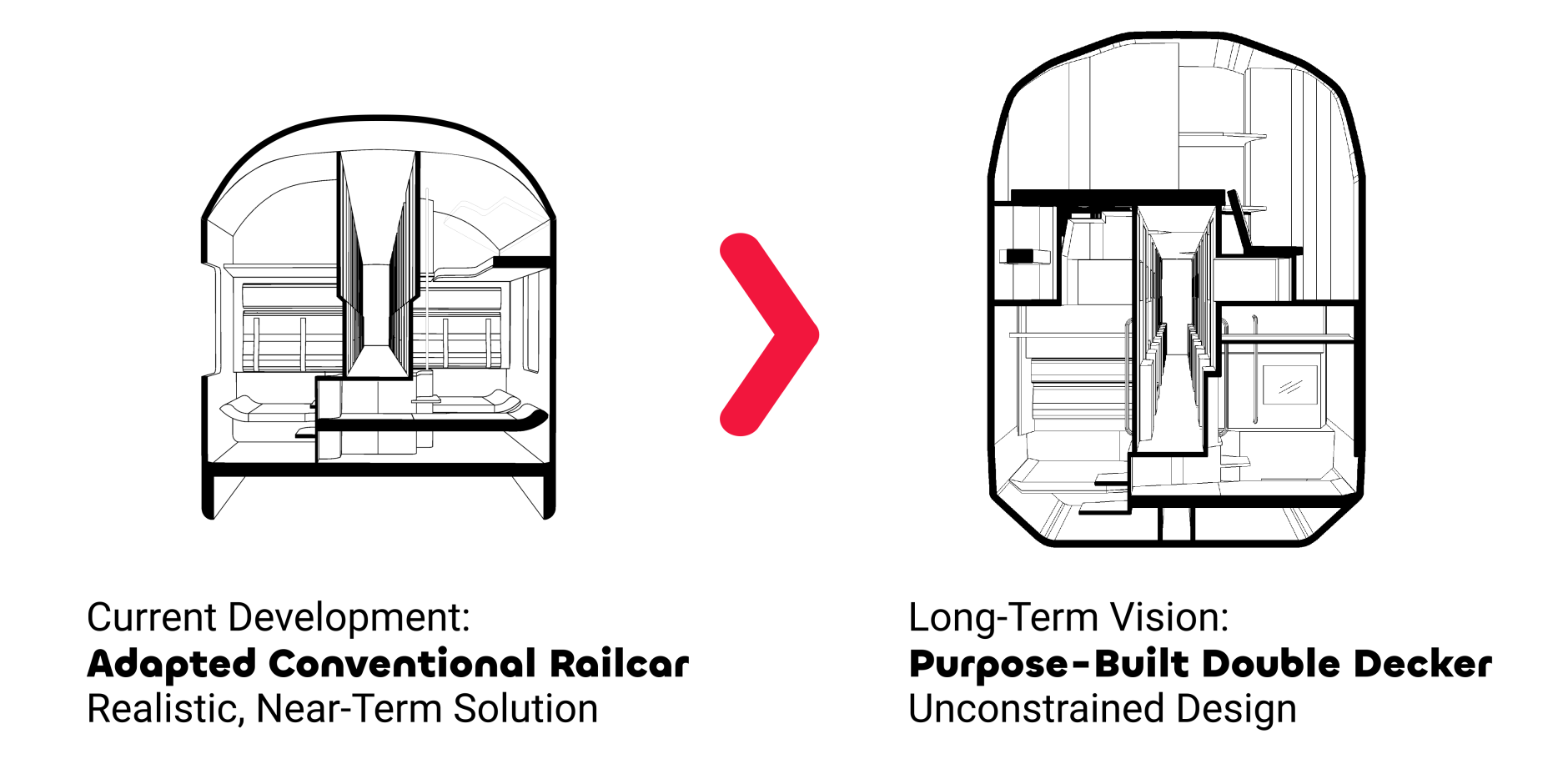Our Approach
Maximizing the Potential of Night Trains
Realistic Present, Optimal Future
Our development process began with a blank slate to find the most efficient layout for a day- and night-train involving all private cabins, leading to a new, patent-pending approach. The specific plan we have presented with our renderings etc. is the first application of that approach, adapted for the real-world constraints of existing conventional railcars.

The adapted conventional railcar places private cabins on three sides of a central corridor. The long-term plan for a newly developed rail vehicle offers the potential to arrange cabins on all sides of the corridor, which will increase capacity by a further 25%.
Solving the Economics of Night Trains
All the night train technologies based on rail cars are bound by the total operating cost of running each rail car. Thanks to dynamic pricing, an operator can sell the first ticket for cheap. But unless they can improve efficiency, for every discounted ticket, another passenger has to pay extra. In order to actually become competitive, especially against aviation, we need to reduce the average ticket price.
This price is dictated by a trade-off: passenger capacity versus individual privacy. Usually, more privacy means fewer passengers per rail car, which increases the cost per ticket.
For any traveler, the price they will deem fair depends on the level of comfort. For a basic couchette, that ceiling is low. For a truly private space, it’s higher. This relationship creates a Viability Threshold – the boundary a product’s cost must stay under to be economically sustainable on a large scale.

This is graph is simplified. The breakeven cost is also affected by the ability to be equally run during the night and day (which Luna Rail mostly can), the occupancy (single cabins are better), the cost and complexity of operations of and the purchase of the rail car (which undoes some of the occupancy advantage), the attractiveness of the cabin (for example the size of the cabin and bed, and whether it’s necessary to climb ladders to get into the beds). Nevertheless, the visualization it is meant provide a rational comparison of the economic viability of proposed, tested and implemented Technology.
The visualization shows that most night trains (existing or proposed) are above the viability threshold, making them reliant on subsidies or high prices. Night trains may still be viable without subsidies, but only in large travel markets, and then only capturing a small share of that market.
Luna Rail is the first Night Train solution well within the zone of economic sustainability. A newly designed vehicle even more so. This unlocks the potential for profitable operations, lower ticket prices and the significant expansion of the train network.
Don’t want to miss any News?
Subscribe to our Newsletter.
Learn more about our progress in our quarterly newsletter. Let’s travel together.